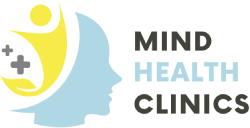



All Services Covered by OHIP

Flexible Appointment Times Including Evenings and Weekends

Experienced Licensed Physicians

Timely and Personalized Care
Welcome To Mind Health Clinics
Welcome to Mind Health Clinics, where we specialize in providing compassionate primary care for individuals struggling with ADHD, Insomnia, Anxiety and a variety of other health conditions such as testosterone deficiency and chronic pain. At our clinics, we understand the profound impact that these health issues can have on individuals and their families, and we are dedicated to helping our patients navigate their journey toward wellness. With a team of experienced and empathetic healthcare professionals, we offer a range of services tailored to meet the unique needs of each individual. You can trust our clinic to provide expert care in a safe and supportive environment. Your health and wellness matter to us, and we’re here to help you every step of the way. Welcome to a place where healing begins.

All Services Are Provided by Qualified Physicians and Covered By OHIP
Get Started
We Can Help With a Variety of Medical Conditions Without Need For a Referral.
Services We offer:




Chronic Pain
What are the various kinds of chronic pain: Each type of chronic pain has unique characteristics, underlying causes,

Depression
What is depression? Depression is a mood disorder that affects millions of Canadians of all ages. It may



Alchohol Dependence
Alcohol Dependence What are the features of alcohol dependence? Alcohol dependence, a severe form of alcohol use disorder,

Panic Disorder
What are the features of panic disorder? Panic disorder is an anxiety disorder marked by recurrent and unexpected

- ADD
- Anxiety
- Insomnia
- Depression
- Panic
- OCD
- PTSD
- Addiction
- Alcohol
- Chronic Pain
Attention Deficit Disorder
Anxiety
Insomnia
Depression
Only half of Canadians experiencing a major depressive episode receive “potentially adequate care.”
One-third of Canadians aged 15 or older who report having a need for mental health care say those needs were not fully met.
People with mood disorders are at much higher risk of developing a long-term medical condition.
People with mental illness are two times more likely to have a substance use problem versus the general population.
People with mental illness and addiction are more likely to die prematurely versus the general population.
People with mental illness are two times more likely to have a substance use problem versus the general population.
Panic Disorder
Panic disorder is an anxiety disorder marked by recurrent and unexpected panic attacks, which are sudden episodes of intense fear or discomfort that escalate rapidly, usually peaking within minutes.
During attacks, individuals may experience a range of physical symptoms such as heart palpitations, chest pain, shortness of breath, dizziness, sweating, trembling, nausea, and feelings of choking.
Psychological symptoms include a sense of impending doom, fear of losing control, going crazy, or even dying.
Attacks are often followed by persistent concern or anxiety about having future attacks, and individuals may develop avoidance behaviors, steering clear of situations or places where they fear an attack might occur.
For diagnosis, a person experiences multiple unexpected panic attacks and at least one month of ongoing concern about additional attacks or significant behavioral changes related to the attacks.
Treatment typically involves medication and counseling. Medications for panic disorder include SSRIs like sertraline and fluoxetine, benzodiazepines like clonazepam for short-term relief, and SNRIs like venlafaxine.
Obsessive-Compulsive Disorder
If you have OCD, you may be stressed, embarrassed and frustrated about the condition. But treatment can be effective.
Post-traumatic Stress Disorder
PTSD is a complex mental health condition triggered by experiencing or witnessing a traumatic event. The core features include intrusive memories, avoidance, negative alterations in mood and cognition, and heightened arousal.
Individuals with PTSD often experience recurrent, involuntary, and distressing memories of the trauma, which can include flashbacks or nightmares that feel vividly real.
The flashbacks lead to significant avoidance behaviors where the person may steer clear of reminders or situations related to the trauma, or have trouble remembering aspects of the event.
Negative alterations in mood and cognition can manifest as persistent negative thoughts about oneself or others, feelings of hopelessness, or a sense of detachment from others.
Additionally, patients often experience a heightened state of arousal, which can involve hypervigilance, exaggerated startle responses, irritability, or difficulty sleeping.
Treatment typically includes psychotherapy, along with medications like selective serotonin reuptake inhibitors (SSRIs) to manage symptoms or benzodiazepines for short-term relief.
Addiction
Alcohol Dependence:
Like other substance use disorders, alcohol use disorder is a chronic and relapsing condition that reflects changes in the brain.”
When people with the disorder are abstaining from alcohol, they remain at increased risk of going back to unhealthy alcohol consumption, even if years have lapsed since their last alcoholic drink.
People who have alcohol use disorder may continue to use alcohol even though they know it is causing social, health, financial, domestic and possibly legal problems in their lives.
It is important to remember that alcohol use disorder is not due to an individual’s lack of self-discipline or resolve. Rather, it is a brain disease that can be inherited.
Long-term alcohol use can produce changes in the brain that can cause people to crave alcohol, lose control of their drinking and require greater quantities of alcohol to achieve its desired effects.
Alcohol use disorder can also cause people to experience withdrawal symptoms if they discontinue alcohol use. These symptoms can be acute and may need urgent treatment.
Chronic Pain
Additionally, social factors such as socioeconomic status, access to healthcare, social support networks, and cultural beliefs about pain can influence how individuals experience and cope with chronic pain.
Services we offer:
There are many variations of passages of Lorem Ipsum available – Copy
Lorem Ipsum is simply dummy text of the printing and...
Read MoreShould Women Stop ADHD Meds During Pregnancy? – Copy
Continuing dexamphetamine for attention deficit-hyperactivity disorder (ADHD) during pregnancy was...
Read MoreBinge Eating: 10 Effective Ways To Overcome Binge Eating – Copy
10 Tips for Overcoming Binge Eating You may want to...
Read More



